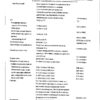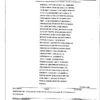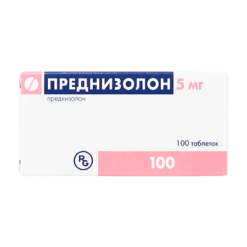No products in the cart.
Betaspan Depo, 7 mg/ml suspension 1 ml 5 pcs
€1.00
Out of stock
(E-mail when Stock is available)
Description
Pollinosis, Allergies, Bursitis, Joint pain (arthralgia), Neurodermitis, Urticaria, Rheumatoid arthritis, Skin itching, Eczema, Dermatitis, Dermatosis, Bronchial asthma, Psoriasis, Dry skin, Insect bites
Treatment of conditions and diseases in which GCS therapy can achieve adequate clinical effect (it should be borne in mind that in some diseases GCS therapy is additional and does not replace standard therapy):
Active ingredient
Active ingredient
How to take, the dosage
How to take, the dosage
Intra-articular, intra-articular, peri-articular, intrabursal, IV, intratissue and intrafocal administration.
The small size of betamethasone dipropionate crystals allows small-diameter needles (up to 26 gauge) for I/C injection and administration directly into the lesion.
It should not be injected intravenously or pelvic.
Strict adherence to asepsis is mandatory when using the drug.
The syringe should be shaken before administering the drug.
The dosing regimen and route of administration is determined individually, depending on the indication, the severity of the disease, and the patient’s response.
In systemic therapy, the initial dose of Betaspan® Depot in most cases is 1-2 ml. Injection is repeated as needed, depending on the patient’s condition.
Introduction of Betaspan
Introduction of Betaspan® Depot should be made deep into the muscle, selecting large muscles and avoiding entry into other tissues (to prevent tissue atrophy).
In severe conditions requiring emergency measures, the initial dose is 2 ml of the drug.
Injection of 1 ml of the drug is usually sufficient for various dermatological diseases.
In respiratory diseases the onset of action of the drug occurs within a few hours after I.V. injection.
In bronchial asthma, hay fever, allergic bronchitis and allergic rhinitis, significant improvement is achieved after 1-2 ml of the drug.
In acute and chronic bursitis the initial dose for intravenous injection is 1-2 ml of the drug. If necessary, several repeated injections are carried out.
If satisfactory clinical response is not achieved after a certain period of time, the drug should be withdrawn and other therapy should be prescribed.
Local administration
In local administration, concomitant use of a local anesthetic agent is only rarely necessary. If this is desired, 1 or 2% solutions of procaine hydrochloride or lidocaine, which do not contain methylparaben, propylparaben, phenol and other similar substances, are used. In this case the mixing is done in the syringe, firstly filling the syringe from the bottle with the required dose of Betaspan® Depot. The desired amount of local anesthetic is then drawn from the ampoule into the same syringe and shaken for a short period of time.
In acute bursitis (subdeltoid, scapula, elbow and patellofemoral), injection of 1-2 ml of the drug into the synovial pouch relieves pain and restores joint mobility within several hours. After relief of exacerbation in chronic bursitis, smaller doses of the drug are used.
In acute tenosynovitis, tendinitis and peritendinitis one injection of the drug improves the condition of the patient; with chronic ones the injection is repeated depending on the patient’s reaction. Direct injection of the drug into the tendon should be avoided.
Intra-articular injection of the drug in a dose of 0.5-2 ml relieves pain, restriction of joint mobility in rheumatoid arthritis and osteoarthritis within 2-4 hours after injection. The duration of the therapeutic effect varies considerably and may be 4 weeks or more.
The recommended doses of the drug when injected into large joints are 1 to 2 ml; in medium joints, 0.5 to 1 ml; in small joints, 0.25 to 0.5 ml.
In some dermatological diseases it is effective to inject the drug directly into the lesion, the dose is 0.2 ml/cm2. The lesion is injected evenly, using a tuberculin syringe and a needle with a diameter of about 0.9 mm. The total amount of drug injected at all sites should not exceed 1 ml for 1 week. A tuberculin syringe with a 26-gauge needle is recommended for injection into the lesion site.
The recommended single doses of the drug (with 1 week interval between injections) for bursitis: 0.25-0.5 ml for omosis (usually 2 injections are effective), 0.5 ml for spurs, 0.5 ml for limited mobility of the big toe, 0.25-0.5 ml for synovial cysts, 0.5 ml for tenosynovitis, and 0.5-1 ml for acute gouty arthritis. A tuberculin syringe with a 25-gauge needle is suitable for most injections.
After therapeutic effect is achieved, the maintenance dose is adjusted by gradually reducing the dose of Betaspan® Depot administered at appropriate intervals. The reduction continues until the minimum effective dose is achieved.
If a stressful situation (not related to the disease) occurs or is threatened, it may be necessary to increase the dose of the drug. Withdrawal of the drug after long-term therapy is performed by gradual reduction of the dose. The patient’s condition should be monitored for at least a year after completion of long-term therapy or high-dose use.
Interaction
Interaction
Special Instructions
Special Instructions
Severe nervous system complications (up to death) have been reported with epidural and intrathecal administration of GCS (with or without fluoroscopic control), including spinal cord infarction, paraplegia, quadriplegia, cortical blindness and stroke. Because the safety and efficacy of epidural administration of corticosteroids have not been established, this route of administration is not indicated for this group of medications. For recommended routes of administration, see the section on Administration and Dosage. Intravascular ingestion of the drug should be avoided. Due to the lack of data regarding the risk of calcification, injection into the intervertebral space is contraindicated.
The dosing regimen and route of administration are determined individually depending on the indication, severity of the disease and patient response.
The dose should be as low as possible and the period of administration as short as possible.
The initial dose is adjusted until the desired therapeutic effect is achieved. The dose of Betaspan® Depot is then gradually reduced to the lowest effective maintenance dose. If there is no effect from the current therapy or if the drug is used for a long time, the drug is also withdrawn, gradually reducing the dose.
Gradual withdrawal of GCS can reduce the risk of secondary adrenal insufficiency.
If a stressful situation (unrelated to the disease) occurs or is threatened, it may be necessary to increase the dose of Betaspan® Depot; hydrocortisone and cortisone preparations should be the drugs of choice as an adjunct.
The development of secondary adrenal cortical insufficiency due to too rapid withdrawal of GCS is possible within several months after the end of therapy. If stress occurs or is threatened during this period, therapy with Betaspan® Depot should be resumed and a mineralocorticosteroid should be concomitantly prescribed (due to possible impaired mineralocorticosteroid secretion).
The patient should be monitored for at least one year after completion of long-term therapy or high-dose use.
Injection of the drug into the soft tissues, into the lesion site and intra-articularly may lead to systemic action at the same time if local effects are pronounced.
Particularly if a patient has a history of drug allergy, necessary precautions should be taken before initiating the drug administration, given the potential for anaphylactoid reactions when giving parenteral GCS.
Betaspan® Depot contains two active substances – betamethasone derivatives one of which – sodium betamethasone phosphate – quickly penetrates into systemic blood flow, therefore its possible systemic effect should be taken into account.
Psychiatric disorders (especially in patients with emotional lability or tendency to psychosis) may occur when using the drug.
The action of GCS is increased in patients with cirrhosis or hypothyroidism.
Betaspan® Depot in patients with diabetes mellitus may require correction of hypoglycemic therapy.
Patients receiving GCS should not be vaccinated against smallpox. Other immunizations should not be performed in patients receiving GCS (especially in high doses) due to the possibility of neurological complications and low immune response (lack of antibody formation). Betaspan® Depo should not be used 8 weeks before and 2 weeks after vaccination with killed or inactivated viral and antibacterial vaccines. However, immunization is possible during substitution therapy (e.g., primary insufficiency of the adrenal cortex).
Patients receiving Betaspan® Depot in immunosuppressive doses should be warned to avoid contact with patients with chickenpox and measles (especially important when using the drug in children).
The use of GCS may suppress reactions in skin tests.
When using the drug it should be taken into account that GCS may mask the symptoms of infectious disease and decrease the body’s resistance to infection. Immunosuppressive action of GCS may lead to activation of latent infection or exacerbation of intercurrent infections, including infections caused by microorganisms: Candida, Mycobacterium, Toxoplasma, Strongyloides, Pneumocystis, Cryptococcus, Nocardia or Ameba. Particular caution should be exercised when using GCS in patients with confirmed or suspected Strongyloides (Escherichia coli) infection. In these patients, GCS-induced immunosuppression can lead to Strongyloides hyperinfection and spread of infection through larval migration, which is often accompanied by severe enterocolitis and septicemia caused by Gram-negative microorganisms, possibly with a fatal outcome.
Because GCS may aggravate the course of latent amebiasis, all patients with unexplained diarrhea or patients arriving from countries with tropical climates should be evaluated to rule out amebiasis before starting GCS therapy.
Asepsis and antisepsis rules must be carefully observed when administering the drug.
Cautious use of the drug in patients with high risk of infection (on hemodialysis or with dentures) is necessary. The drug application in case of active tuberculosis is possible only in cases of fulminant or disseminated tuberculosis in combination with adequate antituberculosis therapy. When using the drug in patients with latent tuberculosis or in the period of tuberculin test run, the dose of Betaspan® Depot should be very carefully selected (in view of the risk of reactivation of tuberculosis), and in case of long-term use – antituberculosis chemoprophylaxis is necessary. When prophylactic use of rifampicin, the acceleration of hepatic clearance of betamethasone should be taken into account (correction of the dose of betamethasone may be required).
In the presence of fluid in the joint cavity, a septic process should be excluded. A marked increase in pain, swelling, increased temperature of the surrounding tissues, and further limitation of joint mobility are indicative of septic arthritis. It is necessary to carry out the examination of aspirated joint fluid. If the diagnosis is confirmed, it is necessary to prescribe an appropriate antibiotic therapy. The use of Betaspan® Depot in septic arthritis is contraindicated.
Repeated injections into the joint in osteoarthritis may increase the risk of joint destruction. Injection of GCS into the tendon tissue gradually leads to tendon rupture. After successful intra-articular therapy, the patient should avoid overloading the joints.
Long-term use of GCS may lead to posterior subcapsular cataracts (especially in children), glaucoma with possible optic nerve damage, and may contribute to secondary ocular infections (fungal or viral). Periodic ophthalmologic examination is necessary, especially in patients receiving Betaspan® Depot for more than 6 weeks.
Particular caution should be exercised when considering the possibility of systemic use of GCS in patients with active herpetic eye lesions (keratitis due to herpes simplex virus).
The use of medium and high doses of GCS may cause increase in blood pressure, sodium and fluid retention in the body and increased excretion of potassium from the body (these phenomena are less likely with synthetic GCS unless used in high doses). In case of long-term use of high doses of Betaspan® Depot, risk of arrhythmia and hypokalemia, the necessity of prescription of potassium-containing drugs and diet with table salt restriction should be considered. All GCS increase calcium excretion.
When concomitant use of Betaspan® Depot and cardiac glycosides or drugs that affect plasma electrolyte balance requires control of electrolyte and water balance.
Acetylsalicylic acid in combination with the drug Betaspan® Depot is used with caution in hypoprothrombinemia.
Caution should be exercised when using GKS in elderly patients; in patients with renal or hepatic impairment, diverticulitis, active or latent peptic ulcer disease and/or intestinal disease or with recently established intestinal anastomoses, osteoporosis, confirmed or suspected parasitic infections (such as strongyloidosis).
The symptoms of peritoneal irritation or decreased pain syndrome of gastric or intestinal wall perforation may be minimal or absent in patients receiving GCS.
The use of GCS in patients with hypothyroidism or myasthenia gravis should be used with caution.
There have been reports of cases of Kaposi’s sarcoma in patients treated with GCS, and withdrawal of this therapy may lead to remission of the disease.
The use of GCS can change motility and sperm count.
If you have a long-term history of GCS therapy, consider switching from parenteral to oral GCS with an assessment of the benefit/risk ratio.
Pediatric use
Children on therapy with the drug (especially long-term) should be closely monitored for possible growth retardation and development of secondary adrenal insufficiency.
In Athletes
Patients participating in World Anti-Doping Agency (WADA) controlled competitions should read the WADA regulations before starting treatment with Betaspan® Depot as doping control results may be affected.
Contraindications
Contraindications
– hypersensitivity to betamethasone or other components of the drug, or other GCS;
– systemic mycoses;
– intravenous, subcutaneous, epidural, intrathecal administration;
– administration directly into the tendons of muscles;
– in intraarticular administration: unstable joints, infectious arthritis;
– injection into infected surfaces and into the intervertebral space;
– children under 3 years of age (presence of benzene alcohol in the composition);
– coagulation disorders (including.
– coagulation disorders (including treatment with anticoagulants);
– thrombocytopenic purpura (intramuscular administration);
– period of breastfeeding;
– simultaneous administration of immunosuppressive doses of the drug with live or weakened vaccines.
Parasitic and infectious diseases of viral, fungal or bacterial nature (current or recent, including recent contact with a patient) – herpes simplex, herpes zoster (viremic phase), varicella, measles; amebiasis, strongyloidiasis (established or suspected); active or latent tuberculosis. Use in severe infectious diseases is allowed only against a background of specific antimicrobial therapy.
Vaccination period (inactivated vaccines) 8 weeks before and 2 weeks after vaccination, lymphadenitis after BCG vaccination. Immunodeficiency conditions (including AIDS or HIV infection).
Gastrointestinal diseases: gastric and duodenal ulcer, esophagitis, gastritis, acute or latent peptic ulcer, newly created intestinal anastomosis, ulcerative colitis with threat of perforation or abscess, diverticulitis, abscess or other purulent infections.
Diseases of the cardiovascular system, including recent myocardial infarction (patients with acute and subacute myocardial infarction may have a spread of necrosis, delayed scar tissue formation and thereby rupture of the heart muscle); decompensated chronic heart failure; arterial hypertension; hyperlipidemia.
Endocrine diseases – diabetes mellitus, decreased glucose tolerance, thyrotoxicosis, hypothyroidism, Icenko-Cushing’s disease, obesity of III-IV degree.
Severe chronic renal and/or hepatic failure, nephrourolithiasis, cirrhosis.
Hypoalbuminemia and conditions predisposing to its occurrence.
Acute psychosis, severe affective disorders (including in the anamnesis, especially “steroid” psychosis).
Systemic osteoporosis, myasthenia gravis, poliomyelitis (except for the bullous form of encephalitis).
Open- and closed-angle glaucoma, eye diseases caused by Herpes simplex (because of the risk of corneal perforation).
Pregnancy.
For intraarticular administration: generalized severe condition of patient, ineffectiveness (or short duration) of two previous injections (taking into account the individual properties of the GCS used).
Precautionary measures are required in elderly patients with hypersensitivity to GCS, especially in postmenopausal women (high risk of osteoporosis); with seizure syndrome.
Side effects
Side effects
Overdose
Overdose
Similarities
Similarities
Additional information
| Manufacturer | Farmak, Ukraine |
|---|---|
| Medication form | suspension for injection |
| Brand | Farmak |
Related products
Buy Betaspan Depo, 7 mg/ml suspension 1 ml 5 pcs with delivery to USA, UK, Europe and over 120 other countries.





















